The Scholastics Art and Writing Awards, the nation’s oldest recognition program for teens with creative interests, recently released its winners of the competition. At the high school, a total of sixty eight students were recognized for their talent. Out of those sixty eight students, 8 were awarded the gold key.
Regan O’Neil ’23: creating artwork with different mediums
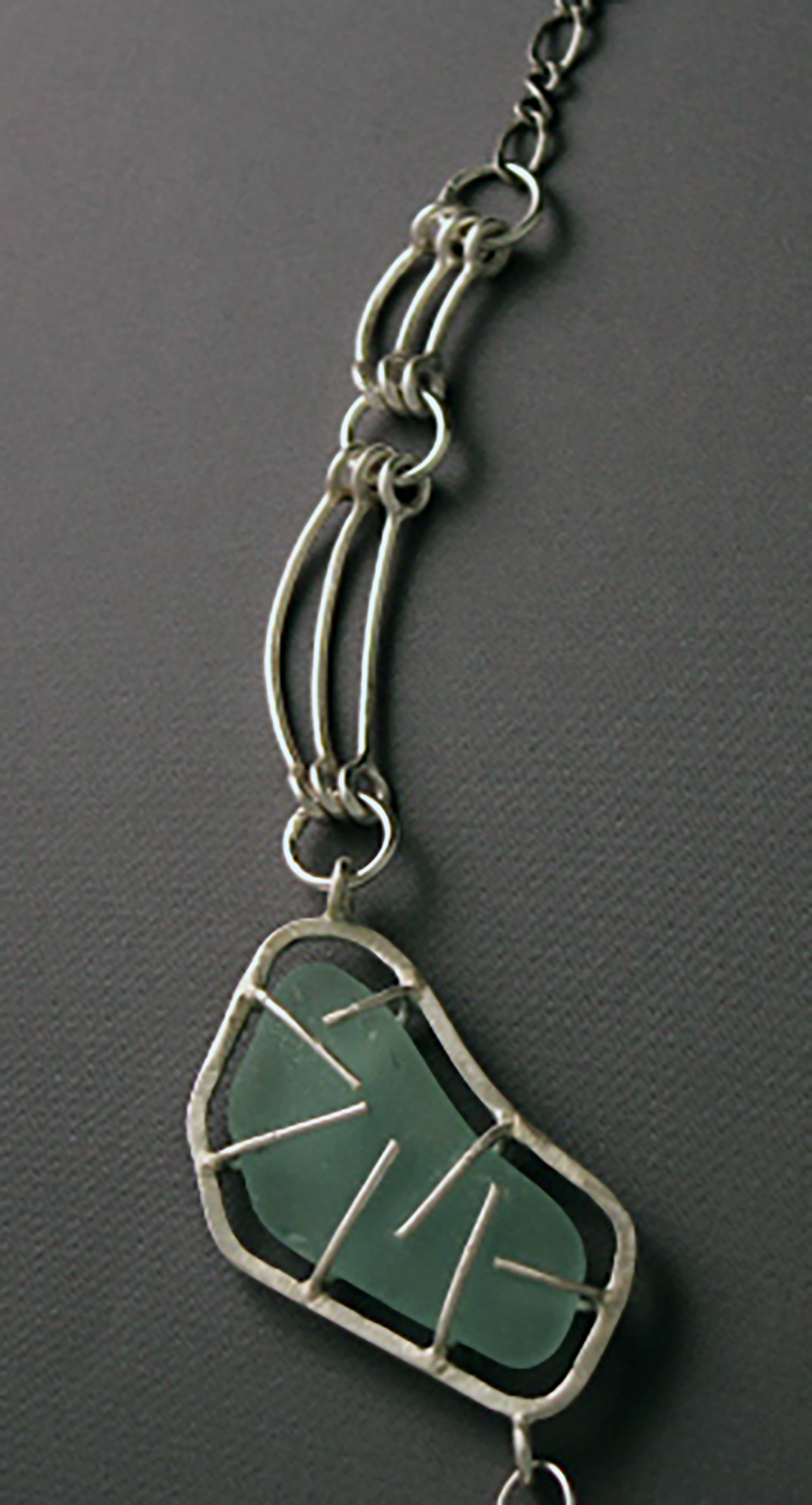
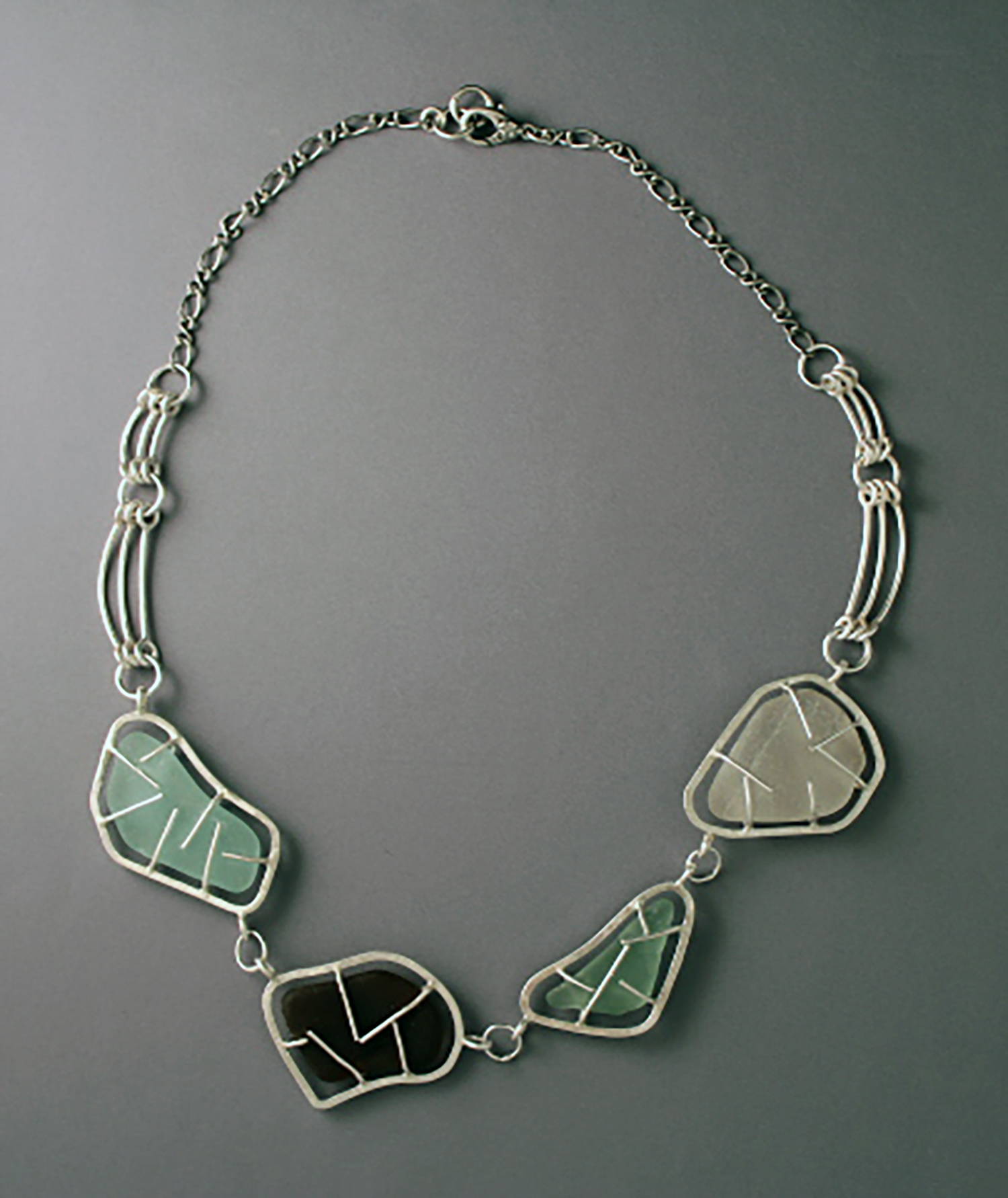
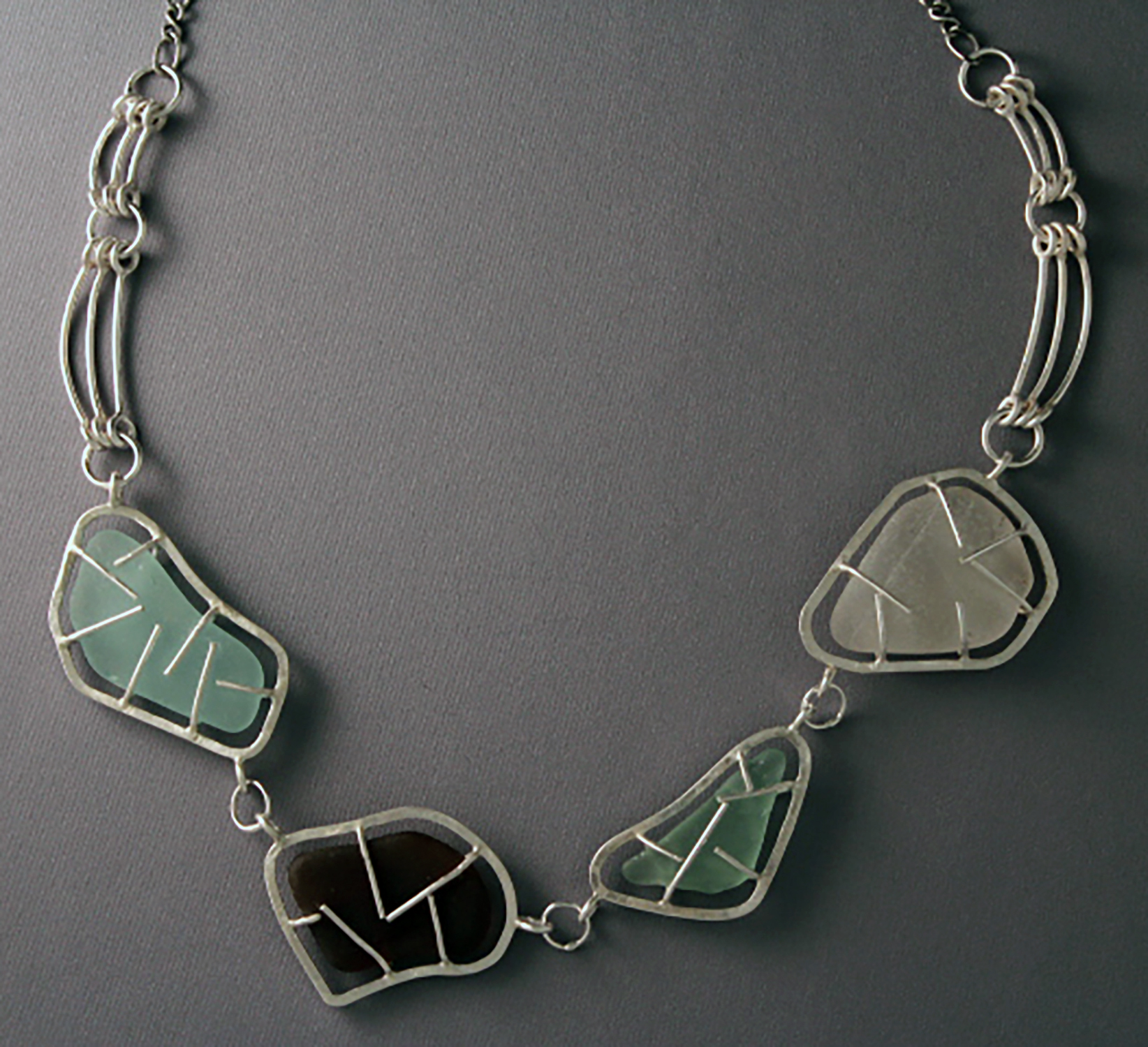
Reagan O’Neil ‘23 recently won a Gold Key from the Scholastic Arts and Writing competition for a piece titled Smoothed by the Tides, a sterling silver necklace.
“The sea glass is all put in what’s called a prong setting. You’ll see that some of them are traditional prongs and on the other end, they’re a little bit longer to give more of a modern twist to the piece. [Reagan] made this piece for his mother and she always wears it out at fancier events and things like that,” said Metals Intensive teacher Ms. Shayla Vines.
O’Neil enjoys delving into multimedia by using different materials and pieces to create his artwork. When he received sea glass pieces from his friends, he was inspired to create a united, multimedia-filled, piece.
“I saw them and I wanted to make them into one cohesive piece, using the pieces of sea glass,” said O’Neil. “I’m really proud of the way it came together overall. The secret is that pieces of sea glass are in different shapes because they’re naturally formed so I’m really happy with the way that I made them fit together.”
O’Neil has been part of the metals community since his freshman year of high school. He is currently in his second year of Metals Intensive and continues to contribute to the community through his social and math skills.
“Reagan is outgoing and very friendly. He was looking to have a good time in the studio as well as learn how to do different techniques and skills. [Over the years], he went from being a little more silly to being more serious,” said Vines. “He’s got a lot of math skills so he helps out with the measurement parts for a lot of students.”
O’Neil hopes to continue to keep art in his future.
“I want to keep doing art in college,” said O’Neil. “Even though I’m not going to be majoring in it. I want to find time to continue working on metalworking in other types of art.”
Joanne Zhang ‘25: photographing the candidness of life
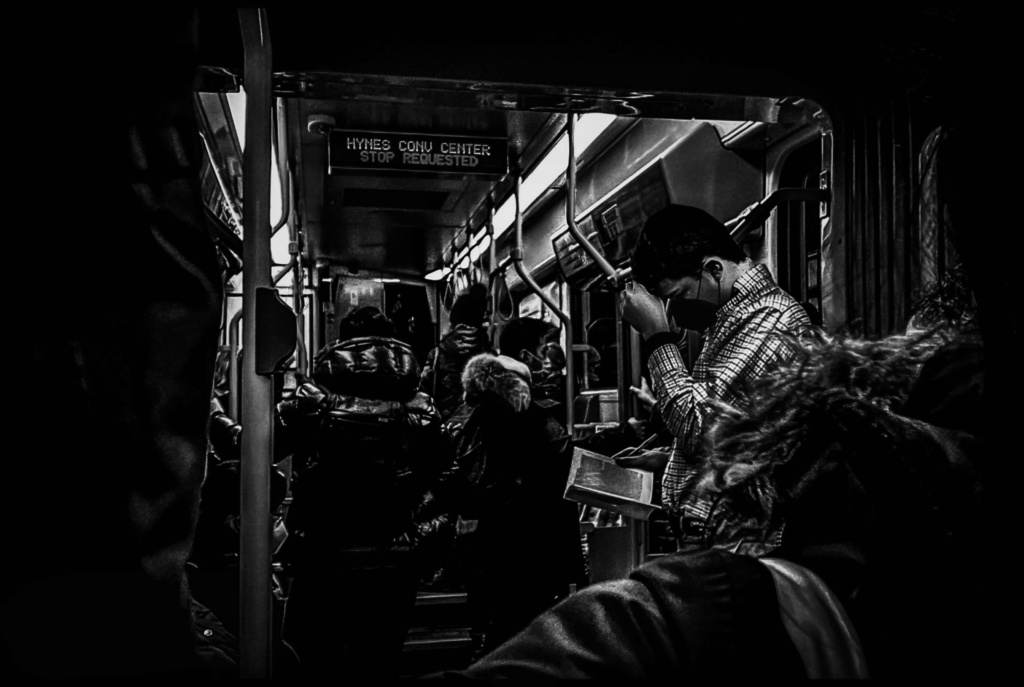

For Joanne Zhang ’25, a previous Scholastics Art and Writing Gold Key winner, the annual competition serves as an outlet for her passions for photojournalism and sharing the candidness of life.
“The main thing about my art and my photographic vision is the fact that I always want to focus on the candidness of life,” said Zhang. “It’s something that I want to bring out to the world and share. I think Scholastics is a great medium for doing so because that’s what they also look for in their art.”
Zhang’s piece was taken by a Canon Camera and is titled Rush Hour. Within her piece, Zhang has captured the busy insides of the green MBTA line. Its uniqueness stems from the various compositions and use of shadows.
“I don’t think anything really prompted me to take it. I thought there were interesting compositions so I took up my camera and snapped a few photos,” said Zhang. “The magic that comes with photography is the fact that usually you just take a few photos of whatever looks interesting to you and whatever you think might look good in a frame.”
While Zhang is not currently part of any virtual art classes at the high school, she is registered to take Beginning Photo with Mr. Doug Johnson during quarter 4 and has taken Dark Room Photography with Ms. Jacqui Martell at the middle school. Zhang has also participated in Boston University’s Summer Journalism Academy, a two-week summer program, where she learned the fundamentals and methods of photojournalism with Mr. Stephen Haines. During this summer program, Zhang advanced her already growing passion for photojournalism.
“I think that in our modern, changing, world, photojournalism is one of the most powerful tools in creating what is a still yet active snapshot of our world and the way it’s transforming,” said Zhang. “A lot of my work is on issues of social justice and issues that are relevant to our modern world.”
Looking forward Zhang hopes to continue to grow her strengths in digital photography and make sure to maintain her photographic vision of capturing the candidness and story behind her camera.
“I don’t want to let my ambition and artistic vision as a photojournalist deter,” said Zhang. “It’s important to keep being present, active, and informed and I really don’t want any of that to change, even as I’m personally beginning to pursue a more artistic direction.”
Zhang hopes that aspiring photojournalists will focus on continuing to find inspiration and pursue their passions amidst lacking resources.
“For anyone who is aspiring to be a photojournalist or just a photographer in general, you could start anywhere. It’s not a question of the accessibility to the resources because a lot of my own photos I like to shoot with my own cameras,” said Zhang. “It’s always about just learning and finding and finding inspiration. Inspiration is the greatest source for productivity in the photographs you’re more than it is about digital tools or the materials or resources you might buy or have.”
Evelyn Harrison ’25: painting the abstract
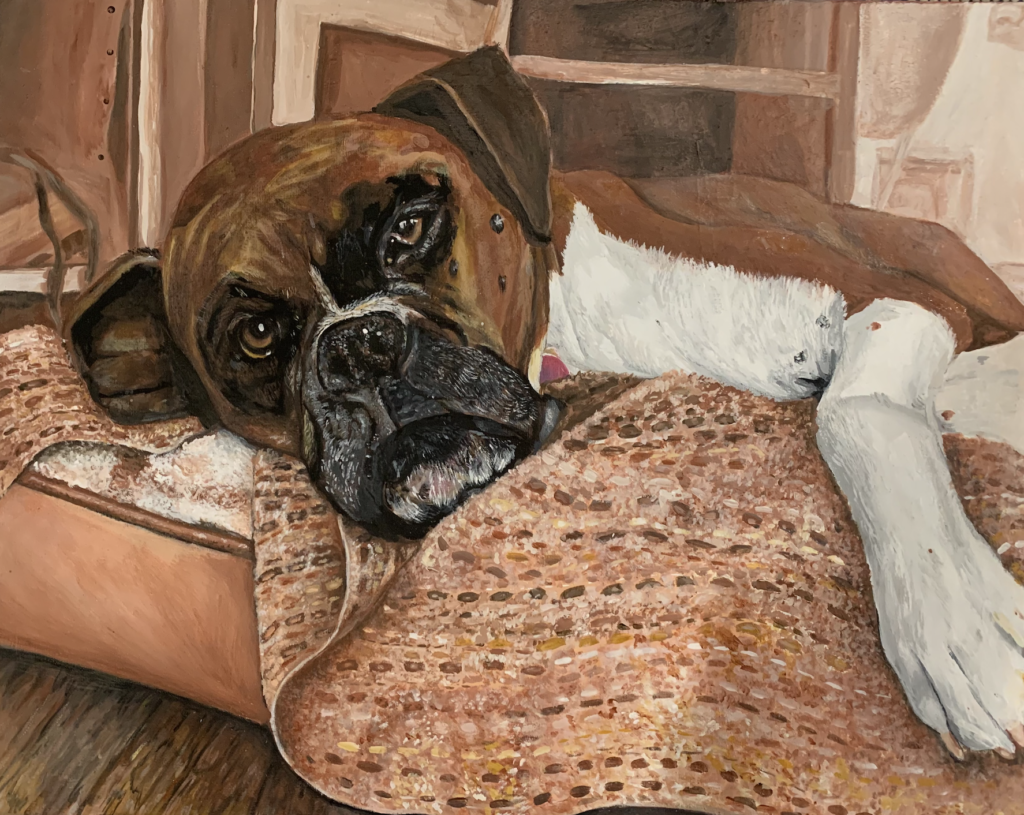
Evelyn Harrison ’25 grew her artistic abilities outside of school in a small Needham art studio that her family discovered during the COVID pandemic. It was in this studio that “Jude 22” — Harrison’s Scholastic award-winning piece of the studio’s dog — was created.
“I grew a lot in [the studio] because we had so much individual attention,” said Harrison. “I also devote as much time as I can after school to [my art]. I think that also just having the practice helped me grow a lot.”
Although the painting was created with the goal of using an old canvas, “Jude 22” and its intricate details now hold special meaning to both Harrison and her art studio as the bog boxer the piece encompassed passed away after about two weeks Harrison finished her painting.
“Last year, [my teacher] had this big boxer dog in the studio named Jude. One day, my teacher made me use up an old canvas so I finally decided to do a painting of him. About two weeks after I finished the painting, [Jude] passed away. So now [Jude 22] is sort of a symbol for our class of how much we miss him.”
Looking forward, Harrison’s goals center around capturing the abstractness of life by creating pieces that are beyond the human eye.
“I want to lean more into the abstractness that could lend itself to art,” said Harrison. “I’m trying to lean into ways that you can use art to portray things that you can’t necessarily see in real life.”
Not only has Harrison’s art journey taught her a variety of skills, but she has also learned how to be more perceptive of her surroundings.
“If you’re constantly drawing from life, you pick up on the composition and color of the world,” said Harrison. “I feel like it has made me appreciate and pay more attention to the world and people around me.”
Katie Passanisi ’23: comprehensive creations
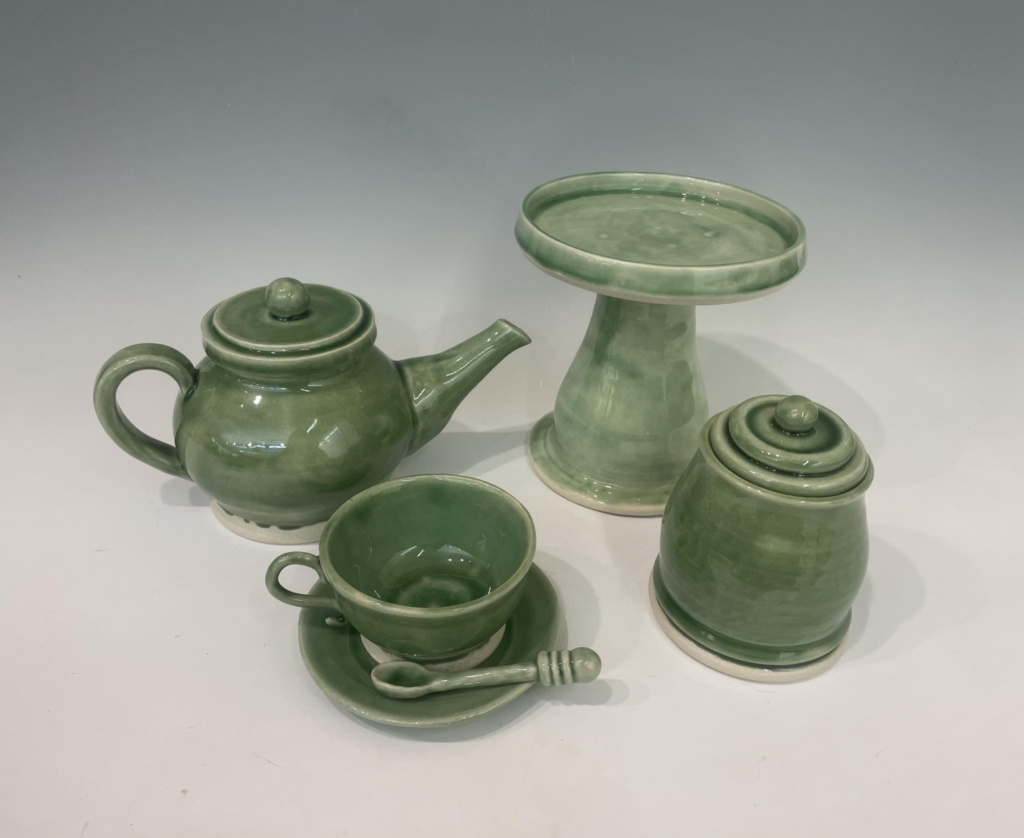
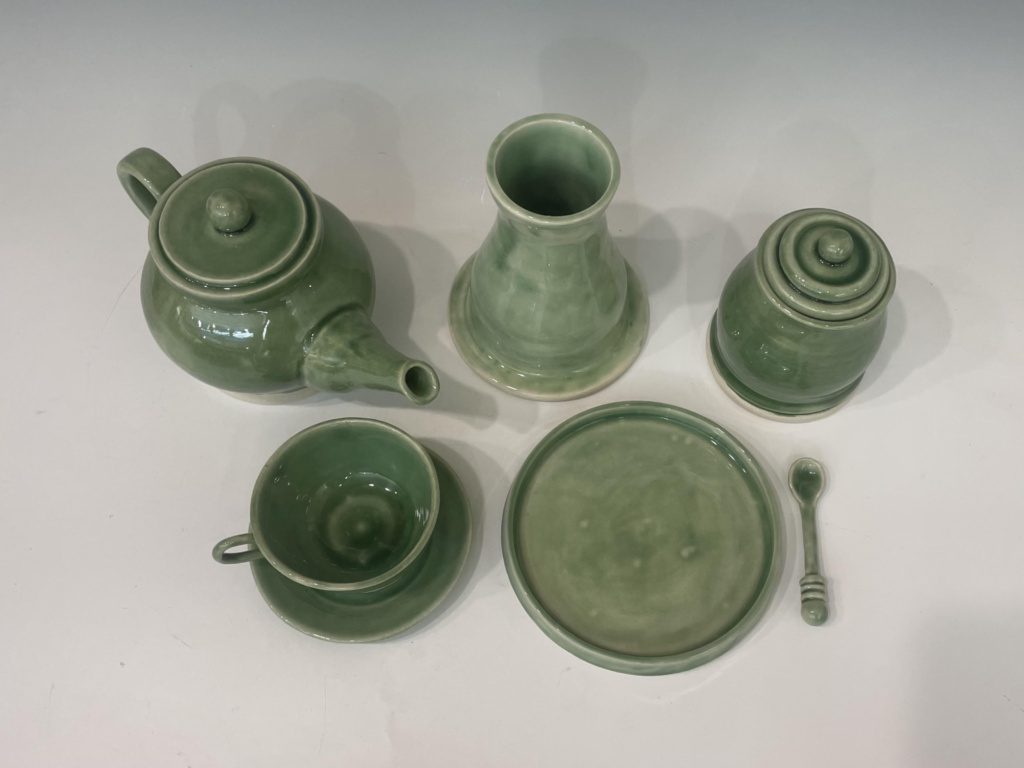
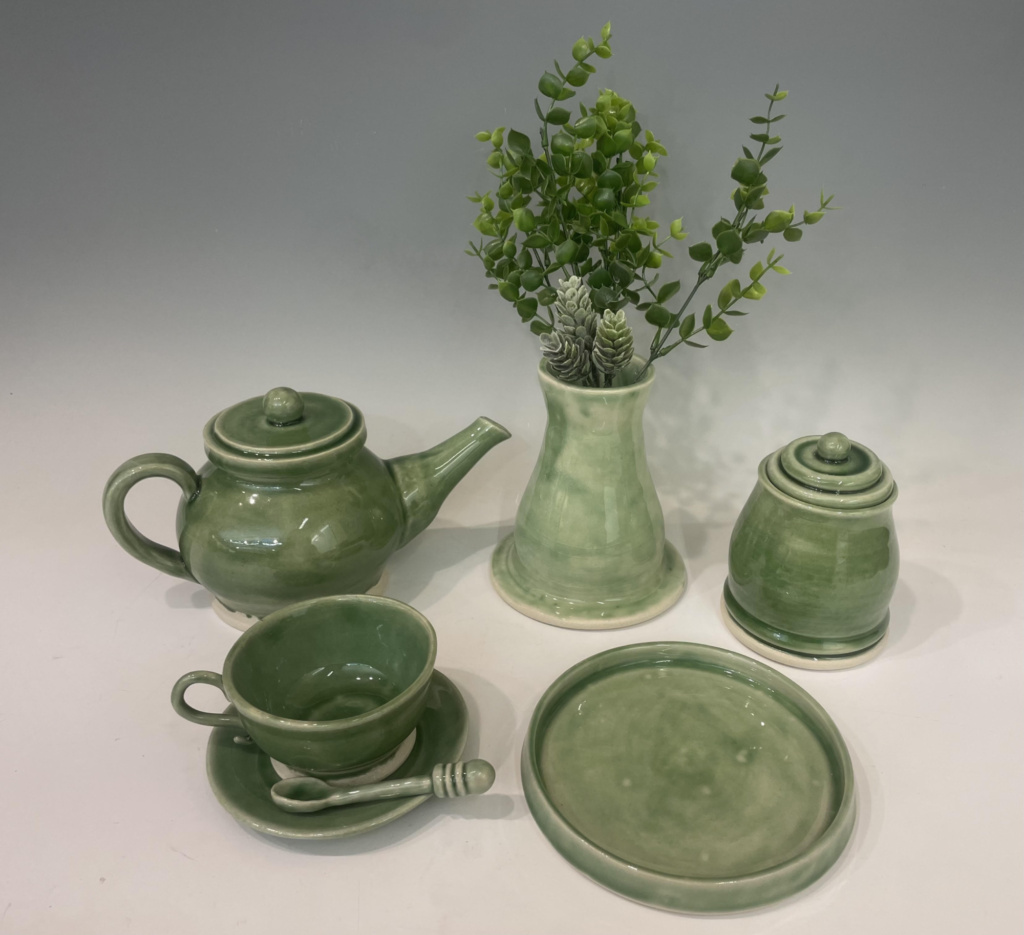
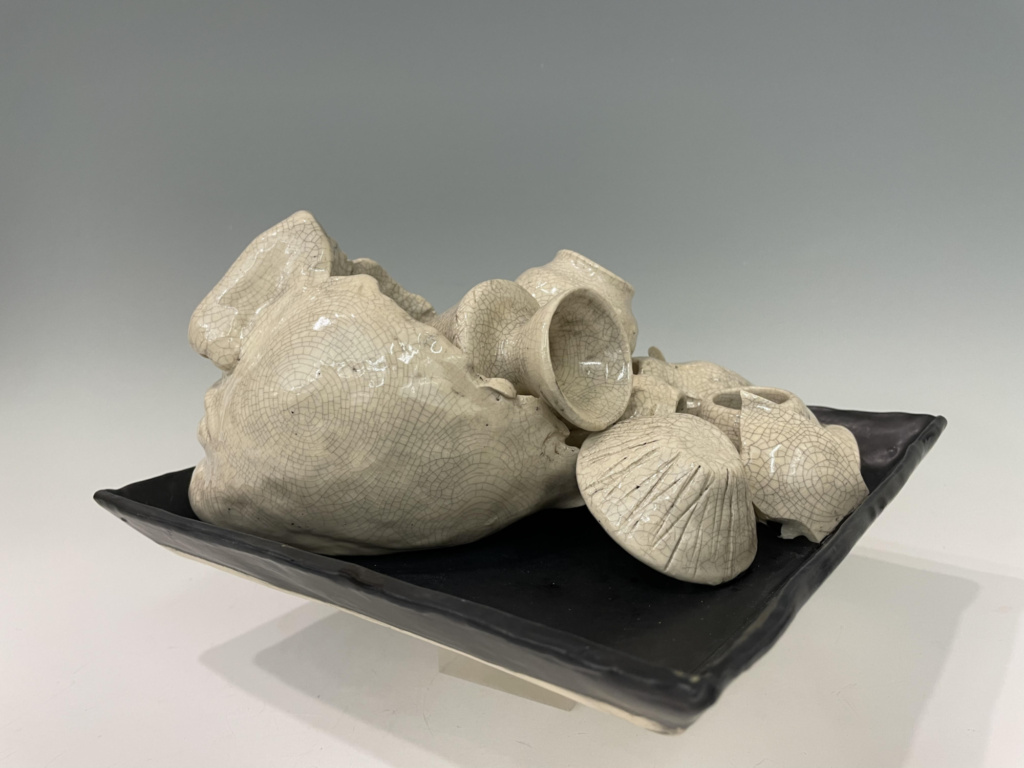
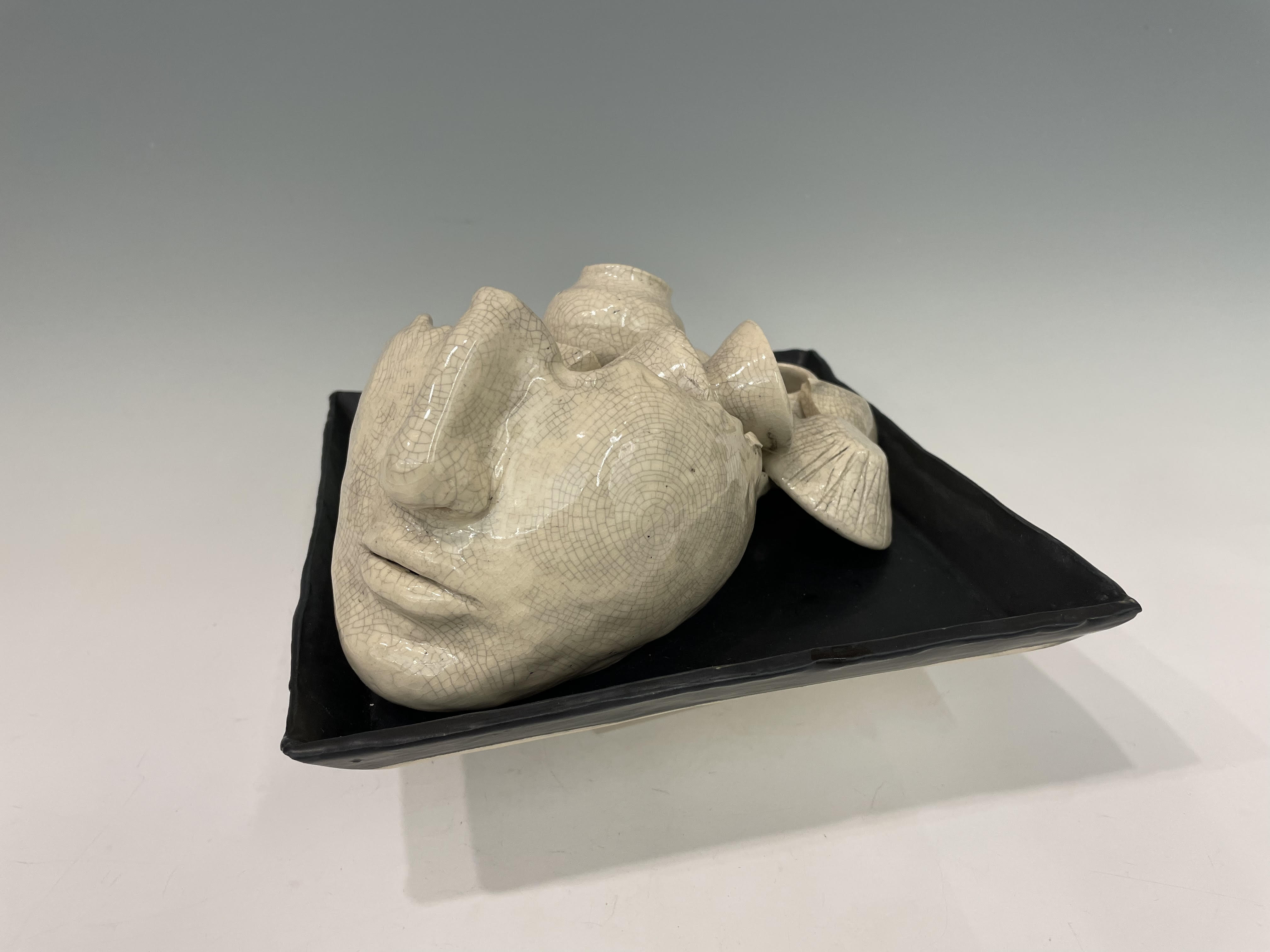
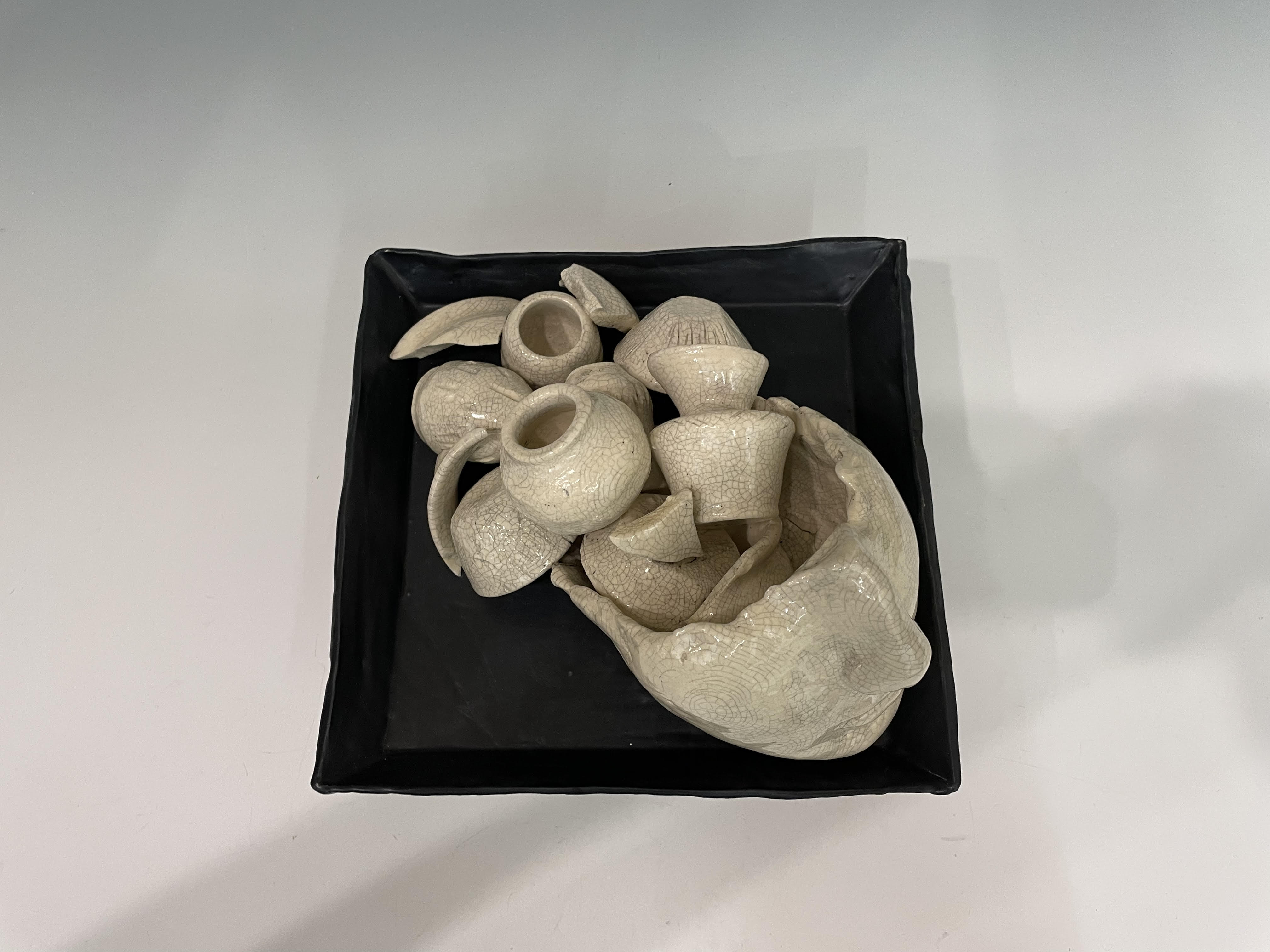
Katie Passinisi ’23 frequently incorporates handbuilt elements into her work and enjoys sketching and painting alongside ceramics. She was awarded the Scholastics Gold Key for her ceramics and glass pieces, “Eau de Nil” and “Antique Thoughts.”
When Passanisi was given instructions to create a cohesive table setting for a particular meal, she composed “Eau de Nil” with the objective of a clean and sophisticated piece, but with an interesting element.
“I chose afternoon tea since I had a teapot in mind. It was definitely a challenge to get the teapot completed but it was by far the most rewarding piece in the set,” said Passanisi. “I wanted to keep it clean and sophisticated, but still interesting so I added a honey stick concept to the honey jar lid that I could weave into the teapot lid as well as the spoon. I glazed it with true celadon since I feel like it captured the vibe of having a nice tea in the springtime.”
Ceramics teacher Ms. Amie Larson has had Passanisi for two years of Ceramics Intensive. She notes that Passanisi is a very comprehensive creator who is very specific about how she wants her piece to turn out.
“Katie thinks a lot about her pieces as she is coming up with her ideas. Her prototype and her sketching are her multiple renditions before she worked on a final piece,” said Larson. “She is not happy until she sees it through to the way she wants it to be done. Even if I tell her that her piece looks great, if it’s not up to her own individual standards, she will continue to persevere until she’s happy with it. I think that’s absolutely one of the reasons she got a Gold Key.”
Passanisi’s second piece, “Antique Thoughts,” pushed Passanisi to go beyond her comfort zone by putting multiple pieces into one and experimenting with different textures and assemblies. Her objective behind this piece was to portray how an artist’s ideas can live on through their art.
“When Ms. Larson introduced the assemblage assignment I wasn’t quite sure what I wanted to do. I decided to go with a sculpted head with pieces falling out of it,” said Passanisi. “As I was putting together the small pieces that were falling out, I wanted to make sure it looked like it was a motion that happened to be captured at that specific time.”
In order to get the “antique” look, Passanisi used a special glaze that cracks in the kiln and filled the cracks with india ink to highlight them.
“This piece took me weeks to make from the challenge of sculpting a realistic face along with assembling each piece to look right in the larger work,” said Passanisi. “I submitted this piece in particular because I put a lot of thought into each element of the piece and its meaning, and was really proud of how it turned out.”
Paige Stephenson ’22: eyes, eyeballs, and things that can see
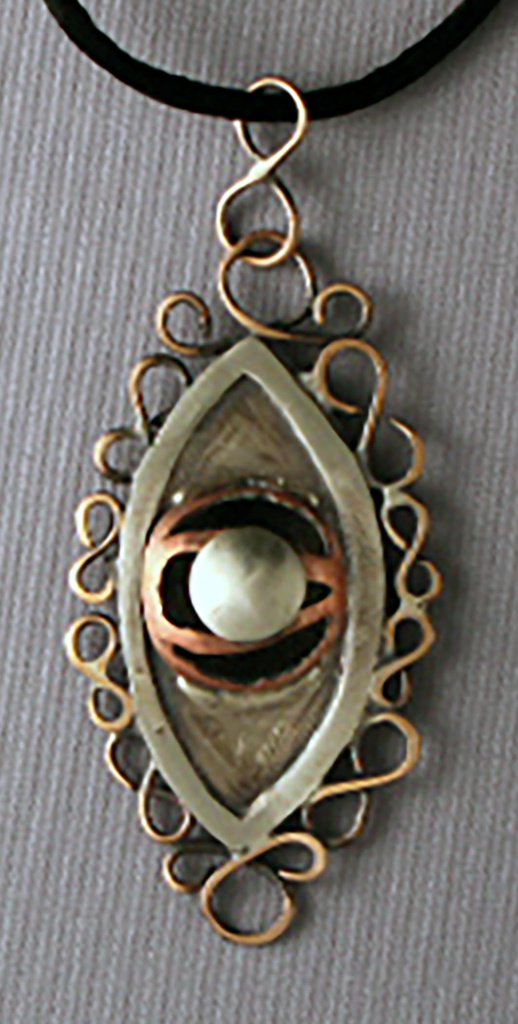
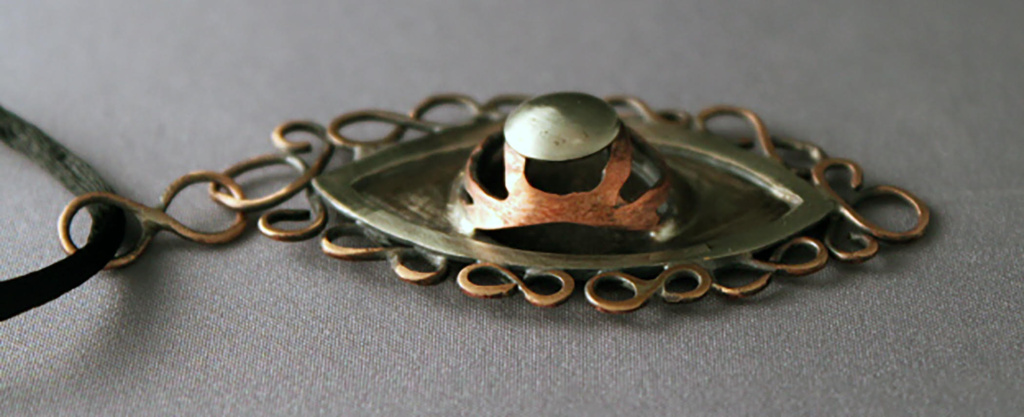
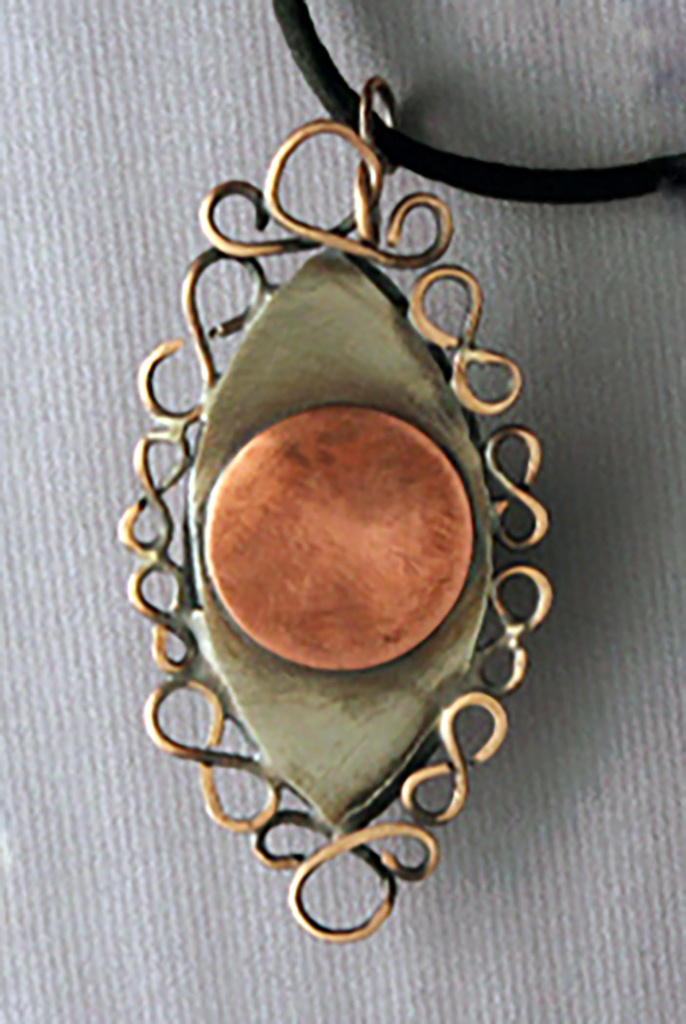
Paige Stephenson is currently a college student at Skidmore College. She took Metals 1 – 3 and was a part of Metals Intensive for two years. She was awarded the Scholastics Gold Key award for her piece “3 Hour Eye,” a mixed media piece.
“Paige was very much into eyes and eyeballs and things that could see, and so her whole portfolio last year was on eyes,” said Ceramics Intensive teacher Ms. Shayla Vines. “I had assigned a term project that had certain requirements, Paige realized that the piece she was working on did not meet all of the requirements so she came up with ‘3 Hour Eye.’”
Stephenson is currently enrolled in a drawing class at Skidmore with the express goal of getting to the metalworking class. While she is not an art major, she hopes to keep art in her life with new experiences and approaches like learning how to use a blowtorch.
“My goal is to make things I would want to wear and that I personally think are cool,” said Stephenson. Things that might be a little weirder or off-balance.”
Mia Meletta ’24: examining literature through science
Mia Meletta ’24 was the high school’s sole student to be awarded a Scholastics Gold Key in writing. She is currently enrolled in honors English and strives to make her writing more interesting by integrating subjects she is passionate about. Meletta’s critical essay titled “On the Inaccuracies of Genetic Engineering in Science Fiction and Woolly Mammoths,” blossomed from her love of science and was originally her sophomore synthesis.
“Whenever I write essays, I try to incorporate other subjects. I’m really passionate about science, so I love doing outside research for myself and will incorporate it into essays,” said Meletta. “[For this piece,] I wanted to analyze the intersection of how accurately science was portrayed in science fiction. On a larger scale, how that portrayal might affect public opinion, depending on how accurate it was.”
Aligned with her interests, Meletta’s essay examines the scientific accuracy of the scientific principles that manifest themselves in science fiction novels and stories. It mainly incorporates CRISPR technology and takes the format of a non-laboratory science investigation with strong elements of literary research.
“[Meletta’s] sophomore synthesis was really unique because she incorporated a lot of science in it as well,” said Bennett. “It was a highly readable study of a few different pieces of fiction that also referred to CRISPR technology. It included a lot of fascinating yet erudite information and footnotes that were available to anyone who wanted to read them.”
Meletta encourages other students to submit pieces and works of their own to the competition. She also urges students to incorporate their interests into their work, whether it’s writing or art.
“If students are considering submitting something, there’s no downside to doing it. It really can pay off. I would encourage students to submit something even if they don’t think they’re gonna get anything out of it,” said Meletta. “I also encourage students when they’re choosing whether it be a piece of art or something they’re writing, to really try and use an interdisciplinary aspect to kind of choose something they’re passionate about and they actually enjoy.”
